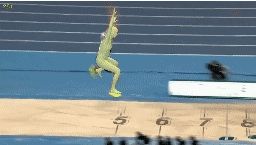GenHMR: A Breakthrough in 3D Human Pose and Shape Estimation – Accepted at AAAI 2025

We are pleased to announce that our paper, “GenHMR: Generative Human Mesh Recovery for Accurate 3D Pose and Shape Estimation,” has been accepted for presentation at AAAI 2025. GenHMR introduces a novel generative framework that surpasses existing methods in parametric 3D human pose and shape (HPS) estimation, offering state-of-the-art accuracy and robustness.
Advancing 3D Human Mesh Recovery
Traditional deterministic and probabilistic methods for 3D pose estimation struggle with depth ambiguity, occlusions, and uncertainty in 2D-to-3D mappings. GenHMR redefines the problem by explicitly modeling uncertainties and leveraging generative modeling techniques to achieve high-fidelity 3D reconstructions.
Key Innovations of GenHMR:
- Generative HMR Reformulation: Moves beyond deterministic pipelines by modeling uncertainties in 2D-to-3D mapping, effectively addressing depth ambiguities and occlusions.
- Pose Tokenizer (VQ-VAE): Encodes 3D poses into discrete tokens, ensuring compact, kinematically valid representations for high-quality reconstructions.
- Image-Conditional Masked Transformer: Learns probabilistic pose distributions by predicting masked pose tokens, capturing complex joint dependencies for enhanced 3D accuracy.
- Uncertainty-Guided Sampling: Iteratively refines pose predictions, progressively improving accuracy by re-predicting low-confidence tokens during inference.
- 2D Pose-Guided Refinement: Ensures precise alignment between the reconstructed 3D mesh and 2D pose cues, enhancing final outputs.
Setting a New Standard for 3D Human Mesh Recovery
By combining generative modeling, iterative refinement, and uncertainty quantification, GenHMR outperforms existing methods in both accuracy and robustness, establishing a new benchmark for 3D human pose estimation.
Acknowledgments
This research was made possible through the contributions of Muhammad Usama Saleem, Pu Wang, Ekkasit Pinyoanuntapong, Hongfei Xue, Srijan Das, and Chen Chen.
Read the Full Paper: Link
Project Page: Link
Stay connected for more updates on advancements in human-centric AI and 3D vision research.